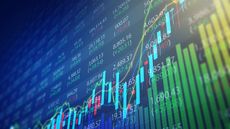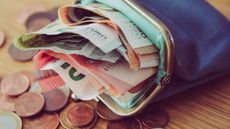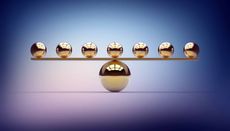Pass on Wasatch/Hoisington U.S. Treasury and Other Treasury Funds
These sizzling funds top the charts, but opportunities are limited, and they carry a lot of risk.

Is it any wonder that Treasury bonds are among the hottest investments on the planet? With Europe in crisis, China's economy slowing and the U.S. economy looking wobbly, investors have been snapping up Treasuries, pushing their prices up and their yields down and propelling long-term government bond funds to the top of the fixed-income charts for the past year. Over the past 12 months through August 14, the average long-term government bond fund gained 18.9%, topping the Barclays U.S. Aggregate Bond index, a barometer of the overall bond market, by 14.0 percentage points.
Among bond funds, long-term Treasury products have benefited the most from falling yields (bond prices move in the opposite direction of yields). The 30-year Treasury yield now sits at 2.8%, down from 3.8% a year earlier. (Unless otherwise indicated, all data and returns are through August 10.)
But we wouldn't buy these funds now. Interest rates are so low they can't fall much further. But they could rise a lot, and that would lead to significant losses for Treasury bonds and the funds that own them.

Sign up for Kiplinger’s Free E-Newsletters
Profit and prosper with the best of expert advice on investing, taxes, retirement, personal finance and more - straight to your e-mail.
Profit and prosper with the best of expert advice - straight to your e-mail.
But the folks who run Wasatch/Hoisington U.S. Treasury (symbol WHOSX) see things differently. Hoisington Investment Management, the Texas firm that runs the fund, says the U.S. economy is poised for two decades of slow growth as it works through a record level of debt. The firm expects the yield on 30-year Treasuries to dip to 2%, eventually, and for stocks to deliver anemic returns. (For the record, Kiplinger expects the economy to pick up in late 2012 and for interest rates to rise in 2013.)
Over the past three years, federal expenditures have averaged about 25% of the country's gross domestic product. That's the highest since the early 1940s, says Hoisington's Lacy Hunt. Citing several studies, he adds that without reforms in Social Security and Medicare, federal outlays will rise to 40% of GDP in 25 years. "We've made promises that aren't going to be kept," he says. "It's not feasibly possible to transfer 50% of assets from working households to retired households."
Without reform, the economy will get progressively weaker -- what Hunt calls a "hollowing out" process -- and that will put pressure on interest rates. Eventually, the U.S. will hit a "bang point," when the government will no longer be able to afford to cover its expenses. "That's where we're headed," says Hunt, who adds that at that point a 2.6% yield on 30-year Treasuries may look mighty attractive -- "as attractive as the 5% level of five years ago is today."
But what of the recovery? Indeed, even Hunt says that according to the country's GDP, the U.S. economy has "technically" been expanding for 12 quarters. But average after-inflation growth during those quarters has run at a slim annualized rate of 1.6%. "That's the worst recovery on record," he says. It's half the average real annualized gain of 3.4% during other 12-quarter expansions. Meanwhile, he adds, the income of Americans and their sense of prosperity are slipping. Disposable personal income per capita -- income left after taxes -- has risen at annualized rate of 0.2% during the 12-quarter recovery. Personal income growth during other 12-quarter expansions averaged 2.9%. "That's not only the weakest gain; it's hardly any gain in prosperity," says Hunt.
He admits the firm's view is "unpopular." Most other economists are worried about coming inflation and rising interest rates. "We've been harping on the debilitating effects of this debt going back to 1996 and 1997," says Hunt. "I can't tell you how many times we were told, when the budget deficit ballooned several years ago, 'Shouldn't you sell Treasuries?'" But Hoisington's assessment of the economy veered the other way. "We've held with our long-duration strategy, though plenty of people thought it was not wise," says Hunt.
The firm's bleak view of the economy has paid off. Over the past five years through August 14, Wasatch/Hoisington U.S. Treasury returned an annualized 13.8%, clobbering the Barclays U.S. Aggregate Bond index by an average of 7.1 percentage points per year. The fund's ten-year annualized return of 9.3% outpaces the index by an average of 3.9 points per year. More remarkable, however, is the fund's one-year number, a gain of 25.2%, which beat the bogey by 20.3 points.
The secret to that outsize performance is a 50% allocation to zero-coupon Treasury bonds -- IOUs that pay no interest and are sold at a deep discount to face value, which you get when the bond matures. The duration (a measure of interest-rate sensitivity) of a zero-coupon bond equals its maturity. So the duration of 30-year zeros is 30 years, which is double that of a standard long-term Treasury, and that makes zeros super-sensitive to rate moves. Over the past decade, Hoisington has roughly doubled its stake in zeros. "We still think there's room for those to improve," Hunt says.
The Wasatch/Hoisington fund's generous allocation to zeros has stretched its average duration to 20 years, which beats the duration of the average long-term government bond fund by four years. A 20-year duration implies that a one percentage point rise in rates would mean a 20% loss for the fund.
Indeed, the fund's performance lately has underscored its susceptibility to rising rates. From July 25 through August 9, a period of steadily rising Treasury bond yields, the fund surrendered 5.6%.
Still, Hunt and the fund's official manager, Van Robert Hoisington, are steadfast in their strategy. Hunt has invested money in Wasatch/Hoisington, and Hoisington has more than $1 million in his namesake fund, according to official filings. "We eat our own cooking," Hunt says. "We invest with our clients."
Kiplinger's Investing for Income will help you maximize your cash yield under any economic conditions. Download the premier issue for free.

Nellie joined Kiplinger in August 2011 after a seven-year stint in Hong Kong. There, she worked for the Wall Street Journal Asia, where as lifestyle editor, she launched and edited Scene Asia, an online guide to food, wine, entertainment and the arts in Asia. Prior to that, she was an editor at Weekend Journal, the Friday lifestyle section of the Wall Street Journal Asia. Kiplinger isn't Nellie's first foray into personal finance: She has also worked at SmartMoney (rising from fact-checker to senior writer), and she was a senior editor at Money.
-
 Stock Market Today: Markets Rebound Ahead of Big Week for Earnings
Stock Market Today: Markets Rebound Ahead of Big Week for EarningsEquities rallied on easing geopolitical tensions, upcoming quarterly results.
By Dan Burrows Published
-
 A Financial Checklist for Widows
A Financial Checklist for WidowsAn interview with a financial adviser about the financial steps widows should take.
By Janet Bodnar Last updated
-
 The 5 Best Actively Managed Fidelity Funds to Buy Now
The 5 Best Actively Managed Fidelity Funds to Buy Nowmutual funds In a stock picker's market, it's sometimes best to leave the driving to the pros. These Fidelity funds provide investors solid active management at low costs.
By Kent Thune Last updated
-
 The 12 Best Bear Market ETFs to Buy Now
The 12 Best Bear Market ETFs to Buy NowETFs Investors who are fearful about the more uncertainty in the new year can find plenty of protection among these bear market ETFs.
By Kyle Woodley Published
-
 Don't Give Up on the Eurozone
Don't Give Up on the Eurozonemutual funds As Europe’s economy (and stock markets) wobble, Janus Henderson European Focus Fund (HFETX) keeps its footing with a focus on large Europe-based multinationals.
By Rivan V. Stinson Published
-
 Best Bond Funds to Buy
Best Bond Funds to BuyInvesting for Income The best bond funds provide investors with income and stability – and are worthy additions to any well-balanced portfolios.
By Jeff Reeves Last updated
-
 Vanguard Global ESG Select Stock Profits from ESG Leaders
Vanguard Global ESG Select Stock Profits from ESG Leadersmutual funds Vanguard Global ESG Select Stock (VEIGX) favors firms with high standards for their businesses.
By Rivan V. Stinson Published
-
 Kip ETF 20: What's In, What's Out and Why
Kip ETF 20: What's In, What's Out and WhyKip ETF 20 The broad market has taken a major hit so far in 2022, sparking some tactical changes to Kiplinger's lineup of the best low-cost ETFs.
By Nellie S. Huang Published
-
 ETFs Are Now Mainstream. Here's Why They're So Appealing.
ETFs Are Now Mainstream. Here's Why They're So Appealing.Investing for Income ETFs offer investors broad diversification to their portfolios and at low costs to boot.
By Nellie S. Huang Published
-
 Do You Have Gun Stocks in Your Funds?
Do You Have Gun Stocks in Your Funds?ESG Investors looking to make changes amid gun violence can easily divest from gun stocks ... though it's trickier if they own them through funds.
By Ellen Kennedy Published